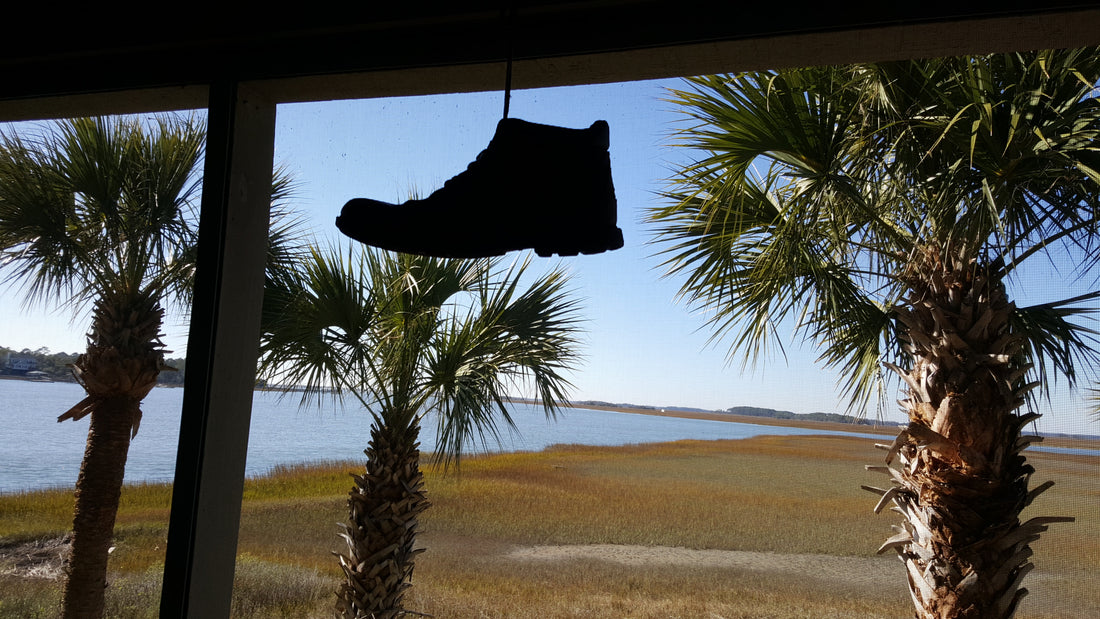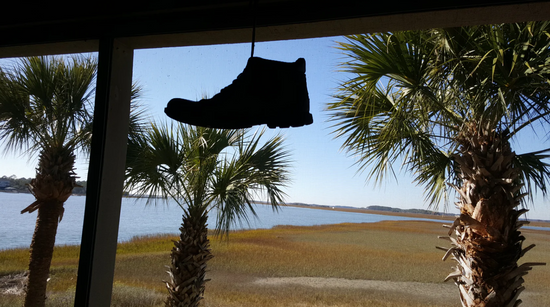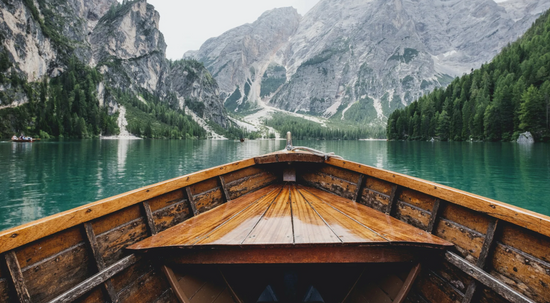HOW IT ALL STARTED...
I always wanted to be a nomad, yet always hated to travel. For me, the best part of taking a vacation was returning home. Then in the summer of 2015, during my first trip to London (for the once-in-a-lifetime Monty Python reunion show) I discovered a natural phenomenon which, although I didn’t realize it at the time, would evolve and shape my future.
After four days in London, my friend and I were utterly exhausted from walking and touring that magnificent city. With heavy feet we made our way to our AirBNB apartment, and after collapsing upon the couch, a familiar thought struck both of us: “it’s good to be home.”
How odd that thought was to me! Home was in Los Angeles, 5000 miles (8000 km) and an ocean away. How could a shabby London suburb apartment evoke the same comfortable feelings of “home” after only four days? I experience the same sensation during my subsequent vacations, and the natural phenomenon became suddenly apparent: It only takes four days for a new location to give you the same comfy, cozy, familiar, and secure feeling that “home” provides. I’ve come to believe that it’s a simple primitive instinct – if you can sleep three nights safely in a new location without being eaten, you become deeply attached to that place.
My observation of this phenomenon developed into a guiding principle: Home is not where my stuff is. Home is not where my job is. Home is not where my friends and family live. Home is wherever I am. Anywhere I go (except prison), I will feel secure and comfortable if I manage just to live through the first three nights.
With the comfort and confidence in this new perspective, I was prepared to flee Los Angeles for good and hit the road. My remaining possessions merely consisted of a car full of essentials and a kitten to deliver to my brother in San Francisco. Since then, I’ve moved 114 times and stayed in 40 different AirBNBs and 50 different hotels. I’ve driven over 50,000 (80,000 km) miles (rarely along the same roads) and flown almost as many. I’ve lived in cabins and mansions, on farms and in big cities, in forests, deserts, and swamps, along rivers, lakes, and oceans, and slept one night under the stars in an Oregon hay field awaiting an eclipse.
I left Los Angeles three and a half years ago, yet all that time I have always felt at home. If you read so far and you are getting curious about the Nomadic Lifestyle here are what I would like to describe as The Ultimate Nomad’s Survival Guide.
1. NEVER LOOK AHEAD
When you’re looking ahead, you’re not paying attention to where you are. The place you are is the place you live, and there’s probably a lot to learn and explore and enjoy right where you are. Focused awareness of your surroundings can be a matter of survival, especially in unknown lands, and especially for solo voyagers. Of course some planning for upcoming journeys is essential. Choose your destination and secure your travel and lodging arrangements. Book tickets and make reservations for your must-see attractions. Then, for everything else, wait until you arrive to decide what to see and do. This is the secret recipe for living life in the moment.

2. ALWAYS HAVE A PLAN B
Where will you sleep if your AirBNB host cancels your reservation en route? What will you do if your car breaks down on a farm road in Indiana? How will you navigate to your destination if your phone screen cracks the night before your departure? What will you eat when a 5 day rainstorm turns all roads leaving your cabin in Maine to treacherous mud? Backup plans don’t need to be detailed, but you’ll feel more secure in your adventures by having a general idea of your alternatives for when mayhem occurs (and it will). Some of the most satisfying memories are made when you save yourself from sticky situations with the help of a little forward thinking and your wits.

3. EVERY PLACE HAS ITS MOMENT
Most of the amazing places to see on the planet are quite horrible for 9 months a year. Choosing when to go is equally as important as choosing where to go. Every place has its perfect moment, like New England in autumn or Holland in spring. Don’t expect to do much sightseeing in Alaska in the darkness of winter. If you don’t like big crowds, go to tourist destinations during their off-seasons. Until the next Ice Age, you won’t find good skiing in Miami. By definition, nomads move like the birds with the seasons to avoid extreme temperatures, but the modern day nomad can migrate globally and chase their favorite seasons. It’s always summer somewhere!

4. EAT WHAT THE LOCALS DO BEST
When in Rome, eat as the Romans eat. Some of the best new things I've ever tasted on my travels were everyday staples to locals, but were virtually unheard of beyond their small region. Beef on Wekis unique only to the town of Buffalo, New York. Merely the thought of She Crab Soupin South Carolina makes my mouth water, and I can and do eat about a million Scotch Eggsin the U.K. Gold Ground Cherries(a.k.a. gooseberries) in rural Quebec were so unique and delicious, I created a new tenet for myself to follow: when you encounter fruit you've never seen, always try it. There are hundreds of amazing fruits that are grown by rural farmers, but they wither quickly and never make it to big city markets. Pay attention to farm stands in summer and autumn, and when you're in the right place at the right time, pounce without hesitation and enjoy!





